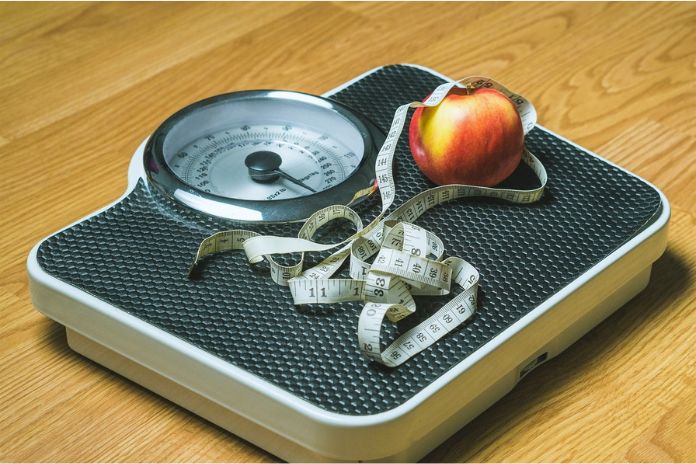Forget about restrictive diets and miraculous weight-loss promises in a few days. After all, getting rid of those unwanted pounds is possible by adopting a healthy and nutritious diet. Want to know how? Then read the article we prepared for your health and well-being to the end!
What Is A Healthy Diet?
A healthy diet contains the nutrients necessary for the proper functioning of the body. According to the food pyramid, it must be composed of carbohydrates, fruits, vegetables, proteins, dairy products, fibers, and fats. Maintaining a varied menu is the best way to lose weight, as metabolic functions are performed correctly. But not only that. It is also necessary to understand which foods to include in each group. See below:
Carbohydrates
At the pyramid’s base are carbohydrates, a group of foods that provide the energy needed for the body to function correctly. It consists of bread, pasta, cassava, and cereals. However, it is possible to make some substitutions in this group to make meals lighter. That way, you lose weight naturally and without starving yourself. Look:
- Replace white rice with brown rice;
- Instead of traditional pasta, use gluten-free pasta ;
- Swap traditional bread (shaped or French) for whole meal bread;
- Replace the potato with sweet potato or abroad.
Vegetables And Fruits
The second level of the pyramid is shared between two food groups: vegetables and fruits. Each one should be ingested in three daily portions and comprise food sources of minerals, fiber, and vitamins essential to the body.
Milk And Dairy Products, Meat And Eggs, Beans And Oilseeds
Meanwhile, the third level of the pyramid (from bottom to top) is divided into three distinct food groups: milk, cheese, and yogurt; meat and eggs; beans and oilseeds. Here’s what these foods are and how they can contribute to your healthy diet:
- Milk, cheese, and yogurt: primary sources of calcium for the body;
- Meat, fish, and eggs: sources of protein. Highlight lean cuts (grilled red meat and chicken) and fish rich in omega-three, such as tuna and sardines;
- Beans and oilseeds: emphasis on soy, which can reduce harmful cholesterol levels, and on chestnuts, walnuts and almonds. Oilseeds are sources of polyunsaturated fats, which have anti-inflammatory and antioxidant properties.
Oils And Fats, Sugars And Sweets
Finally, at the top of the food pyramid are the ingredients that should be consumed in less quantity. However, did you know you can make healthy substitutions, even in this group? Just change the traditional cooking oil for one of the following options:
- olive oil ;
- Peanut oil;
- Coconut oil.
Ideal Menu For A Healthy Diet
Bearing in mind that a healthy diet consists of a very varied menu, it is worth knowing what to consume and what to avoid at each meal:
Breakfast
Breakfast should account for 20% of your daily calorie consumption. For breakfast, opt for fruits, cereals, and whole-grain bread. To drink, make healthy choices, such as natural juices, milk (skimmed), coconut water, coffee, or tea. Altogether avoid fatty products such as fried foods.
Lunch
Lunch, in turn, should have about 30% of the day’s calorie consumption. For this, the tip is to separate the dish into four parts: salad, vegetables, protein, and carbohydrates. For choosing the four elements, opt for more natural and less caloric foods. Grilled chicken, for example, is a good option, as is brown rice. Vegetables like zucchini and carrots are also very nutritious. For the salad, broccoli, tomato, cucumber, and kale are excellent choices.
Dinner
Dinner is also a substantial meal, but it should be less caloric, taking up 25% of daily consumption. The elements must be those that digest quickly so that the body does not feel heavy at night and end up disturbing sleep. Invest in lots of vegetables and salads, with a small portion of protein. Carbohydrates can be avoided on some days, but not all.
Snacks Between Meals
The remaining calories should be divided into small snacks between meals. They are essential for a healthy diet as they help keep your metabolism working. For them, the best option is fruit. Strawberry, orange, papaya, melon, apple, and grape are delicious ideas that work super well. Yogurts, whole meal toast, and non-fat cheeses can also be consumed in small portions.
Tips For A Healthy And Slimming Diet
Choosing a healthy diet is not synonymous with time-consuming weight loss. Often, a balanced diet brings effective results in a short time. However, for this, you need to be aware of a series of tips, which make all the difference in the process. Follow:
- Never go too long without eating: eating small meals every three hours helps the body burn calories. Also, when we leave our stomachs empty, we tend to eat more than necessary;
- Drink plenty of water to help with the toxin elimination process: an adult should drink at least two liters of water a day;
- Drink teas with thermogenic power: green tea, black tea, and hibiscus tea are well known for their slimming effects. If you prefer, make a good amount and take it instead of water throughout the day;
- Do physical activities: the regular practice of physical exercises enhances the effects of your healthy eating routine, making you lose weight faster;
- Consume less salt and sugar: they are the real villains of a healthy diet and offer several health risks, such as high blood pressure and diabetes.
ALSO READ: LEARN HOW TO MAINTAIN A HEALTHY DIET DAILY

